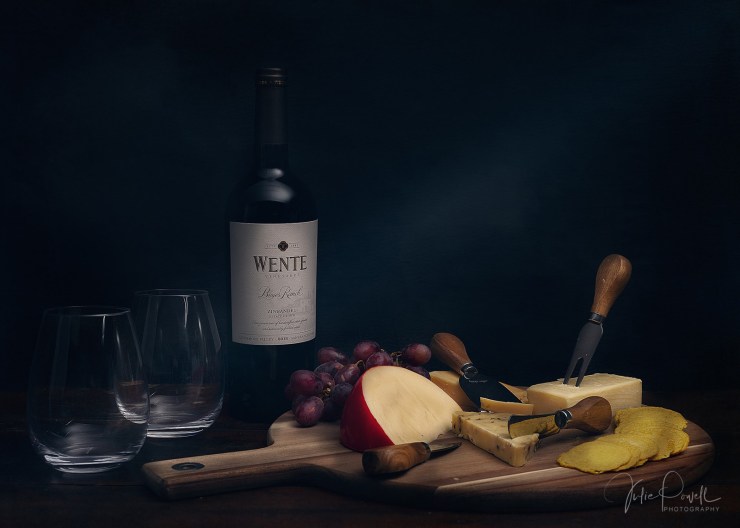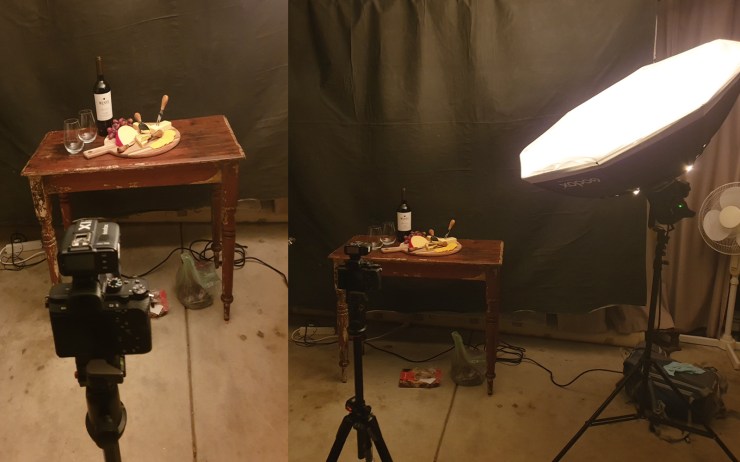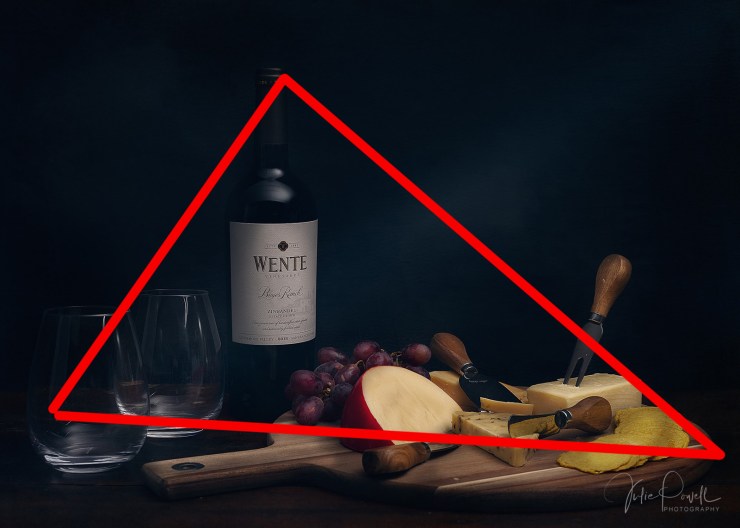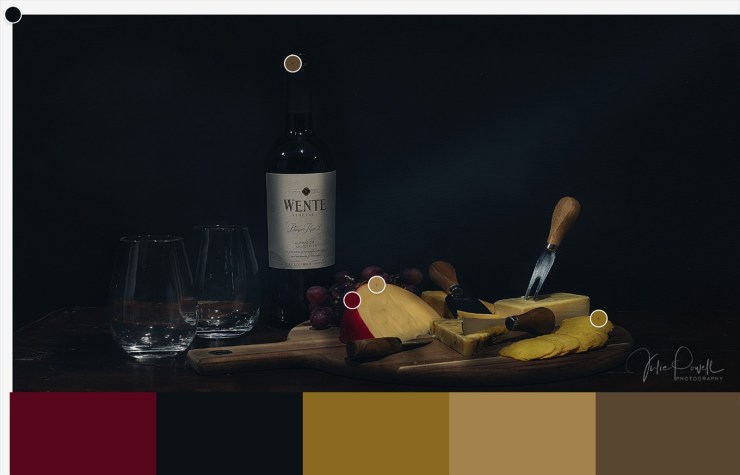Dealing with complex still life scenes and compositions can be daunting, but it does not need to be impossible.
Glass can be difficult to work with due to reflections and unwanted highlights, and a polarizing filter can be a great help in dealing with unwanted reflections. But another great method for removing a lot of unwanted highlights and reflections is to only work in weak or feathered light.

Behind the still life scene set up
This is a shot from a recent photoshoot, taken on my mobile phone. As you can tell it is quite dark in the studio. I have a Bowens strobe with a 95cm octobox set up on half power and aimed at the white ceiling.
The only light hitting the scene was the soft feathered edge of the strobe light and the light reflected off the ceiling. This diffuses and softens the light, but also the highlights and reflections. The background is also matte black painted canvas, which reflects almost no light.

Moving the octobox around to find the best position for removing as many reflections as possible can take a little while, but is well worth the effort. I have set my camera up on a tripod to not only free my hands for styling, but also to be able to take a longer exposure if necessary. I took the original photo with the strobe and had a setting of ISO 100, f/14 and 1/125s to accommodate the strobe light. Then, I wanted to try for longer exposure without the strobe and did not want the camera to change positions.
Composition
With the composition, I tried to keep so many different items within a triangle shape — note the height of the bottle as well as the width of the shot. I also placed my camera on a slight downward angle of about 25 degrees, allowing me to capture the cheese and grapes toward the back of the scene. If I was shooting straight on these details would have been lost. Shooting from the top down (flat lay) would have worked for the cheese platter, but the label on the wine bottle would have been out of shot. I also have the unexpected angle of a cheese fork off to the side. Often, I like to add something unexpected.

The light leads the eye through the image from left to right — from the glasses to the bottle and over the cheeseboard and leads back to the bottle — really making the wine the hero of the image. You need to consider which item is your hero and what items add to the story or can possibly distract from the story … if it does not add to the story you are trying to tell, remove it and see if that improves your composition.
Try grouping things, even within a more complex image. The glass bottle and goblets make three glass items the board and knife handle make five wooden items. Then the cheese and crackers also make five yellow items. For whatever reason having things grouped in odd numbers is more pleasing to the eye than even numbers. Try it for yourself! Of course, there is always an exception to every rule.
Color palette
I used a dark, rich color palette for this image, keeping my tones on the warmer side. There’s a balance between the red/browns and yellow/mustard, and of course the moody blacks. A cooler color palette and lighter background would have looked great and given a very different feel to the whole image. You could go from winter to summer simply by changing up the color palette.

Tell your story with the second annual Visual Storytelling Conference!
Experience four days of interactive, online training sessions featuring a range of educational content with experienced photographers and content creators. This free event kicks off with a series of technical boot camps to build essential skills, followed by live, online sessions on photography, video, business and social media. Join live from March 10-13, 2022!
